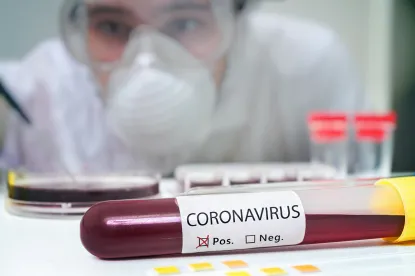While the majority of provisions in the CARES Act address loans and stimulus plans for individuals and businesses, the CARES Act also enacts additional legislation directly impacting schools and amends the Families First Coronavirus Response Act (FFCRA).
The Act sets forth approximately $13.5 billion dollars through formula grants to States to support local educational agencies for coronavirus-response activities. That funding is to be used for the coordination of long-term school closures, the purchase of educational technology to support online learning and any additional tools a school district might need.
Additionally, Pursuant to the CARES Act, Betsy DeVos, the Department of Education Secretary, shall suspend all federal student loan payments without penalty through September 30, 2020. Further, all federal student loans will not accrue interest during the payment suspension. The Secretary hall also “deem each month for which a loan payment was suspended under this section as if the borrower of the loan had made a payment for the purpose of any loan forgiveness program or loan rehabilitation program authorized under par D or B of title IV of the Higher Education Act of 1965 (20 U.S.C. 1087a et seq.; 1071 et seq.) for which the borrower would have otherwise qualified.”
The CARES Act also amends the FFCRA legislation. Its greatest impact involves the eligibility of employees that were let go after March 1, 2020, but are rehired and are granted eligibility to the benefit plans. The following outlines the major amendments to the FFCRA in the following ways:
-
The CARES Act modifies the language of Section 110(b)(2)(B)(ii) to state “An employer shall not be required to pay more than $200 per day and $10,000 in the aggregate for each employee for paid leave under this section.’’
-
The CARES Act creates the authority to exclude certain employees from the Federal Government.
-
“The Director of the Office of Management and Budget shall have the authority to exclude for good cause from the definition of employee under section 5110(1) certain employees described in subparagraphs (E) and (F) of such section, including by exempting certain United States Government employers covered by section 5110(2)(A)(i)(V) from the requirements of this title with respect to certain categories of Executive Branch employees.’’
-
-
The CARES Act expands the definition of an eligible employee. This provision was added to provide coverage to otherwise not eligible employees. If an employer laid off or furloughed an employee after March 1, 2020, that employee may be subject to receive benefits under the EFMLA.
-
(i) In lieu of the definition in sections 101(2)(A) and 101(2)(B)(ii), the term ‘eligible employee’ means an employee who has been employed for at least 30 calendar days by the employer with respect to whom leave is requested under section 102(a)(1)(F).
-
(ii) For purposes of clause (i), the term ‘employed for at least 30 calendar days’, used with respect to an employee and an employer described in clause (i), includes an employee who was laid off by that employer not earlier than March 1, 2020, had worked for the employer for not less than 30 of the last 60 calendar days prior to the employee’s layoff, and was hired by the employer.’’.
-




 />i
/>i

